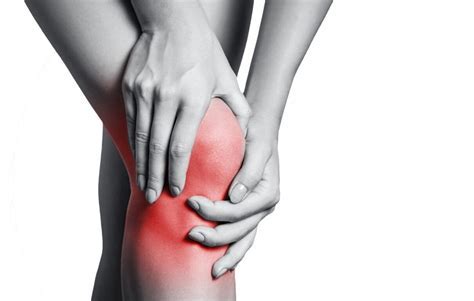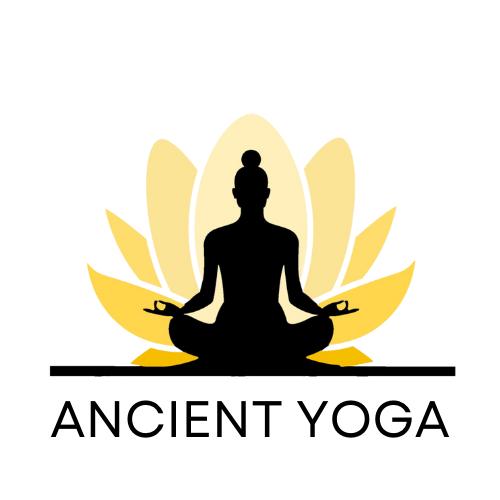Why Yoga is Beneficial for Knee Pain
Yoga is a low-impact exercise that can be an effective tool for managing knee pain. It can help increase flexibility, reduce inflammation, and improve circulation.
Yoga can also help strengthen the muscles surrounding the knee, which can help provide support and stability to the joint. Additionally, practicing yoga can help reduce stress and anxiety, which can exacerbate pain.
Whether you are a seasoned yogi or new to the practice, incorporating yoga into your routine can help alleviate knee pain and promote healing. In the following sections, we will explore some of the best yoga poses for knee pain.
Yoga for Knee Pain: Warm-Up Poses
Before diving into more challenging poses, it’s important to warm up the muscles and joints surrounding the knee. This can help reduce the risk of injury and increase the effectiveness of your practice.
For gentle warm up exercises please watch our video on our Youtube channel. Once there is no active pain you can progress to asanas that will help improve knee pain.
1. Tadasana ankle stretches
In a standing position with the feet together and hands loose beside the body come into the Tadasana posture. Now slowly come up on your toes with an inhalation, hold for a 3-5 counts and slowly lower yourself back on your feet with an exhalation. Repeat for 5-10 times.

2. Downward Facing Dog
Downward Facing Dog is a classic yoga pose that can help stretch and strengthen the hamstrings, calves, and ankles. Begin on your hands and knees with your wrists directly under your shoulders and your knees directly under your hips. Exhale and lift your hips towards the ceiling, straightening your arms and legs. Press your heels towards the floor and gaze towards your navel. Hold for 5-10 breaths.

Yoga for Knee Pain: Standing Asanas
Standing poses can be an effective way to build strength and stability in the muscles surrounding the knee. These poses can help improve balance and alignment, which can help reduce pain and prevent injury.
3. Warrior II
Warrior II is a powerful pose that can help strengthen the quadriceps, hamstrings, and glutes. Begin in Tadasana (Mountain Pose) at the top of your mat. Step your left foot back about 3-4 feet and turn it out to a 90-degree angle. Bend your right knee and square your hips towards the long edge of your mat. Extend your arms out to the sides, palms facing down. Hold for 5-10 breaths and repeat on the other side.
4. Triangle Pose
Triangle Pose is a great way to stretch and strengthen the muscles surrounding the knee. Start in Tadasana at the top of your mat. Step your left foot back about 3-4 feet and turn it out to a 90 degree angle. Extend your arms out to the sides, palms facing down. Hinge forward at your right hip and bring your right hand down to your shin, ankle, or the floor (depending on your flexibility). Reach your left arm towards the ceiling, creating a straight line from your left fingertips to your left heel. Hold for 5-10 breaths and repeat on the other side.
Yoga for Knee Pain: Seated Poses
Seated poses can be a gentle way to stretch and strengthen the muscles surrounding the knee. These poses can help improve mobility and flexibility, which can reduce pain and discomfort.
5. Staff Pose
Staff Pose is a simple seated pose that can help improve posture and strengthen the muscles in the legs. Sit on the floor with your legs extended out in front of you. Press your thighs into the floor and flex your feet towards your face. Reach your arms towards your toes and lengthen your spine. Hold for 5-10 breaths.
6. Bound Angle Pose
Bound Angle Pose can help stretch the inner thighs and improve mobility in the hips and knees. Start seated with your knees bent and the soles of your feet together. Hold onto your ankles and sit up tall. Gently press your knees towards the floor, using your elbows to apply gentle pressure. Hold for 5-10 breaths.
Research Finding
There have been several recent studies on the benefits of yoga for knee pain. One study published in the Journal of Bodywork and Movement Therapies found that practicing yoga for just 12 weeks significantly improved pain, stiffness, and physical function in individuals with knee osteoarthritis (1).
Another study published in the International Journal of Yoga Therapy found that a 6-week yoga program improved balance and functional mobility in individuals with knee osteoarthritis (2).
In a randomized controlled trial published in the Annals of Internal Medicine, researchers compared the effectiveness of yoga, physical therapy, and a self-help book for individuals with chronic low back pain and found that both yoga and physical therapy were more effective than the self-help book (3).
While this study did not specifically focus on knee pain, the results suggest that yoga may be an effective tool for managing chronic pain.
Another study published in the Journal of Pain Research found that yoga may help reduce pain and inflammation in individuals with rheumatoid arthritis, a condition that can cause knee pain (4).
Overall, these studies suggest that practicing yoga can be an effective way to manage knee pain, improve mobility and flexibility, and reduce inflammation.
However, it is important to work with a healthcare provider and a qualified yoga teacher to develop a safe and effective yoga practice that meets your individual needs and limitations.
Yoga for Knee Pain: FAQs
While yoga can be an effective tool for managing knee pain, it is important to practice with awareness and caution. Some poses, such as deep knee bends or lotus pose, may exacerbate knee pain. If you experience pain during a pose, back off and modify as needed. It’s also important to listen to your body and take breaks as needed.
It’s important to listen to your body and practice in a way that feels safe and comfortable. Aim to practice at least 3-4 times per week, but don’t be afraid to take a break or modify as needed.
Yes, yoga can help strengthen the muscles surrounding the knee and improve alignment, which can help prevent knee pain and injury. Regular practice can also help reduce stress and inflammation, which can contribute to knee pain.
Yes, props such as blocks, blankets, and straps can help modify poses and make them more accessible. For example, using a block or blanket under the sit bones can make seated poses more comfortable for the knees.
While yoga can be a helpful tool for managing knee pain, it should not be used as a replacement for medical treatment. If you are experiencing chronic or severe knee pain, it’s important to consult with a healthcare provider.
In addition to practicing yoga, other lifestyle changes that can help alleviate knee pain include maintaining a healthy weight, wearing supportive shoes, and avoiding high-impact activities.
Conclusion: Finding Relief with Yoga for Knee Pain
Knee pain can be a frustrating and debilitating condition, but incorporating yoga into your routine can be an effective way to manage pain and promote healing.
Whether you are a seasoned yogi or new to the practice, there are poses and modifications that can help make yoga accessible and beneficial for your knee pain. Remember to practice with awareness and caution and listen to your body.
References:
- Cheung C, Wyman JF, Resnick B, Savik K. Yoga for Managing Knee Osteoarthritis in Older Women: A Pilot Randomized Controlled Trial. J Bodyw Mov Ther. 2016 Apr;20(2):274-82. doi: 10.1016/j.jbmt.2015.10.002. Epub 2015 Oct 14. PMID: 27131146.
- Kuntz AB, Chopp-Hurley JN, Brenneman EC, Wiebenga EG, McKay MJ. Effects of a 6-Week Hatha Yoga Program on Functional Mobility, Balance, and Fear of Falling in Older Adults With Arthritis: A Randomized Controlled Pilot Study. Int J Yoga Therap. 2020 Sep;30(1):23-37. doi: 10.17761/2020-00006. PMID: 32991651.
- Sherman KJ, Cherkin DC, Wellman RD, Cook AJ, Hawkes RJ, Delaney K, Deyo RA. A Randomized Trial Comparing Yoga, Stretching, and a Self-care Book for Chronic Low Back Pain. Arch Intern Med. 2011 Dec 12;171(22):2019-26. doi: 10.1001/archinternmed.2011.524. PMID: 22159066; PMCID: PMC3276339.
- Badsha H, Chhabra V, Leibman C, Mofti A, Kong KO. The Benefits of Yoga for Rheumatoid Arthritis: Results of a Preliminary, Structured 8-Week Program. J Pain Res. 2019 Apr 3;12:1121-1127. doi: 10.2147/JPR.S198010. PMID: 31118743; PMCID: PMC6483075.






One Response
Thank You for this information.
Yoga truly does wonder for the Body, Mind & Soul.
Will share it with a few others in my family.